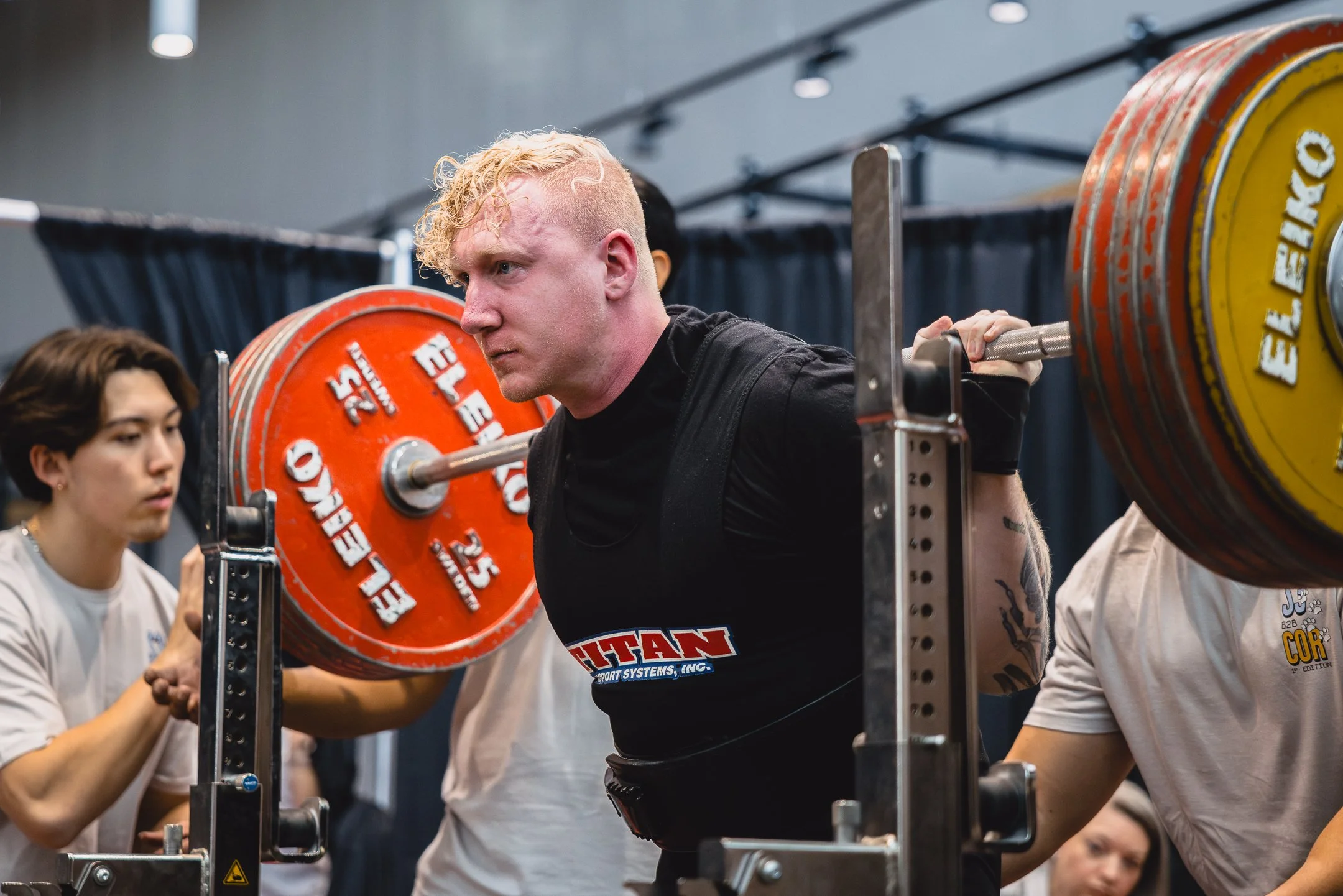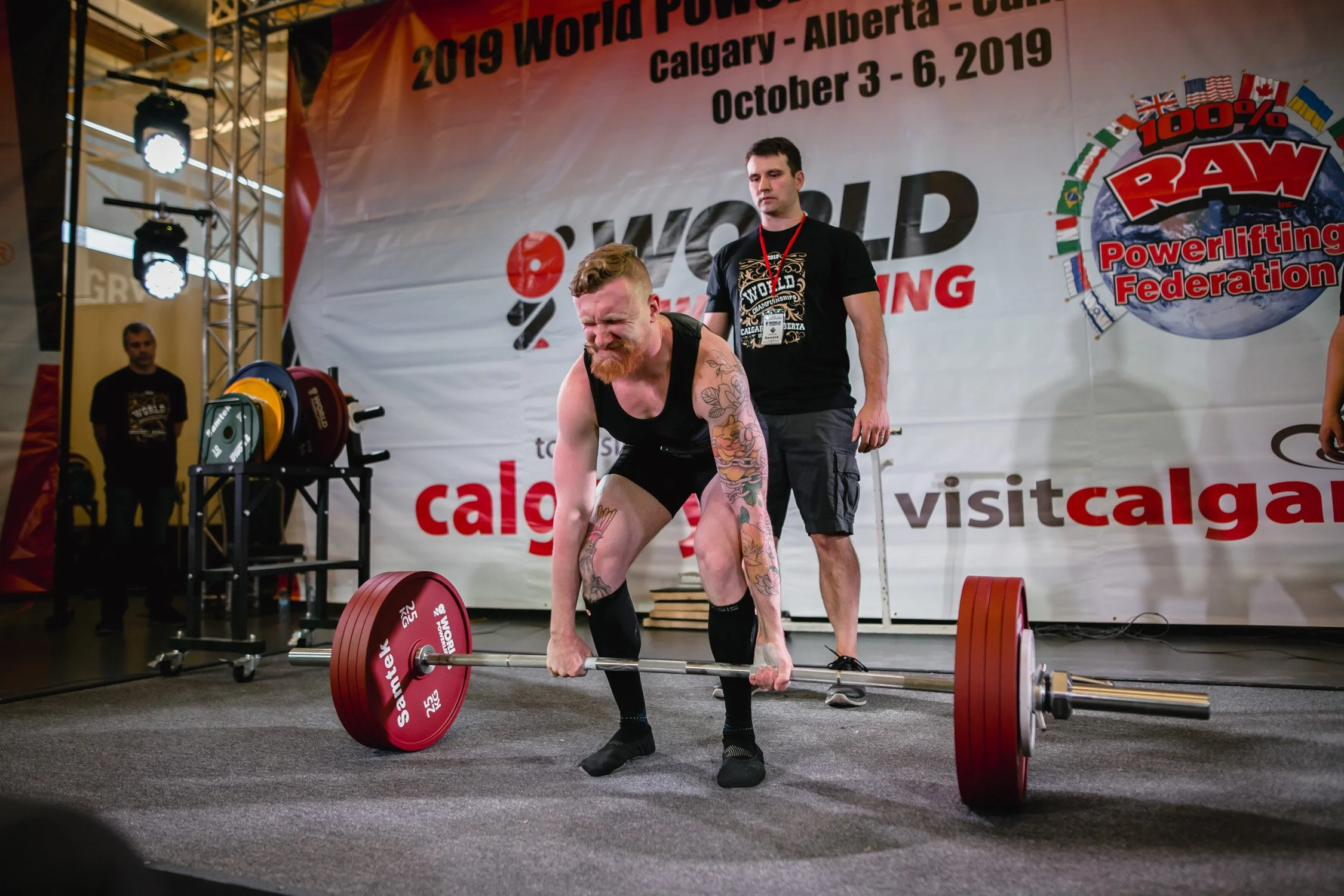Testing Your 1 Rep Max Is A Horrible Way To Get Stronger
We all know that one gym bro “powerlifter” testing his one rep max deadlift every week….
Pulling with a cat back, never gets stronger.
Listen I get it..
We get into powerlifting because we like lifting heavy shit.
However you also probably like seeing the numbers go up and if your maxes are stuck harder than a football on hands with tacky… This article is for you.
The reason why testing your maxes is not great for improving can be broken down into two main reasons….
1.) Poor stimulus to fatigue ratio (you need to do some volume dummy)
2.) Poor movement pattern development
*Bonus.) Moving things fast may be helpful for getting stronger
Lets Talk Volume and Recovery
In this section I am going to try to simplify the complex the best I can.
Everyone has a recovery “budget” that they are working with for every given day, week, month of training. Things like getting lots of sleep and eating enough protein add to this budget.
Training takes away from this budget but everything you choose to do in training also comes with growth of some kind. This is referred to as the stimulus to fatigue ratio.
The stimulus is what you get (Strength gain) and the fatigue is what’s taken out of the budget.
This is why my motto with my own training and clients is “You are not as strong as what you do, but what you and can recover from”.
Going over your recovery “budget” usually means slower progress and increased injury risk.
This is why it is imperative to use your budget wisely.
Testing your one rep max uses a tremendous amount of your budget for admittedly a very low reward when it comes to strength progression.
There is some value in testing and knowing your maxes for sure but what you actually get out of it as far as stimulus is far from being worth what it costs in recovery for basically anyone that’s been training longer than 3-6 months.
If you were to compare doing your one rep max to doing a single rep at a weight you could five reps with the stimulus actually isn’t all that much higher for the one rep max however the fatigue is much greater.
This is a part of the reason why RPE based training is so popular among higher level lifters in todays age. (To learn more about RPE check out this article from my buddy Steve Denovi HERE)
However more importantly in my opinion is the fact that if you are blowing most if not all of your recovery budget too often max testing what you are lacking in is the ability to perform and recover from volume in your training.
While many may disagree with how volume should be included in a program any coach that has been able to successfully get people stronger over long periods of time agree that volume is an important key factor.
Some coaches will increase volume through accessories, and secondary movements. Others will program secondary days that might include a 3x5-7 (3 sets 5-7 reps). Others use block periodization and will do 4-6 week training “blocks” that change from doing sets of 10 to sets of 5 to lower rep work closer to the time when you are going to max test.
While this strategy I think arguably has a little less merit for Intermediate and advanced lifters that have been powerlifting for 2 or more years I do think beginners can still get a lot out of it which is why I chose to use this method in my beginner powerlifting program which you can get HERE for free.
Now if you are asking “if volume is so important why not just do 3x10s all the time and then max test” unfortunately in order to perform at the skill of lifting heavy you need to also practice lifting heavy.
To get the best results you need to balance getting adequate volume for progress and exposure to heavier loads. Every coach and program has different systems for how they manage this balance so pick the one that resonates with you and stop maxing out every week PLEASE.
Your Technique is Garbage Bro
Okay lets talk about the second reason not to max out every week. Let me know if this sounds familiar.
You start warming up for squats, your form is looking crispy clean with the empty bar, you add a 45 to each side still looking awesome, you add another 45lb per side hips start to shoot up a little. You reach your one max and all of a sudden you are doing a good morning instead of squat, your back is rounded, and your knees touch together.
This looks nothing like how it looked with the empty bar.
This variance in technique over time starts to create bad movement patterns or “bad form”.
Now there is no one right or wrong way to perform a squat, bench, or deadlift and every ones version of “good form” can look a little different based off of your leverages.
There however are some things like keeping the bar over your mid foot on a squat that I would consider to be non-negotiables.
First of all if you haven’t figured out what good technique should look like for you… during a one rep max is the worst time to be working on that. Your brain is just going to shut off and lift in the way you are strongest, which probably isn’t going to be the way that is the most efficient.
This is why practicing your most efficient or good technique often is important. Some break down or variance in technique is always going to be present, were humans after all not machines.
However the more you practice reps WITH technique variance the more variance you will see at your top end (heavy work or one rep max testing), the more you practice reps WITHOUT variance the less variance you will have at the top end.
This is why so many high level powerlifting coaches use “technique” days/work in programming as opportunity to get lots of reps in with weights that you are capable of moving with very little movement variance.
Lower weights or lower intensities (lower RPE work) are better for having less technique variance however that doesn’t just mean you want to do the empty bar and call it technique work you want the weights to be high enough that you still practice with something that feels like weight.
Some examples of what this might look like is doing a 3x1 at 70-80% of your max or a 3x4 at 55-60% of your max depending on induvial needs.
Now if you are asking “Max I get low variance technique work while warming up to my one rep max every week” my answer to you is “That’s not enough dummy.”
Ideally 95-99.99999% of your reps should have low variance in your technique meaning you need to be doing more technique work than you think.
Westside Was Right??
Okay so a third and final argument for not maxing out is the argument of training velocity or “speed work” Westside has called it. (If you haven’t seen Westside vs The World go watch it)
While basically no high level coaches are programming “speed work” in the same as Westside used to, “Technique Work” is being used for a very similar intention of creating bar velocity.
The goal isn’t to just move the weight as fast a possible with a lot of form breakdown but when you are lifting a lighter weight and putting the same force into that weight as a heavier weight with control and low technique variance the weight will move faster.
This force production of applying the same force you would into heavier weights into light weights seems to have some alright merit in producing strength gain more so for advanced lifters where the cost of lifting heavier in the recovery budget becomes more and more the heavier you can lift.
Thank you so much for reading. If this article has been eye opening to you and you or someone you know would be interested in working with me as a coach please reach out out to me on my Instagram.




